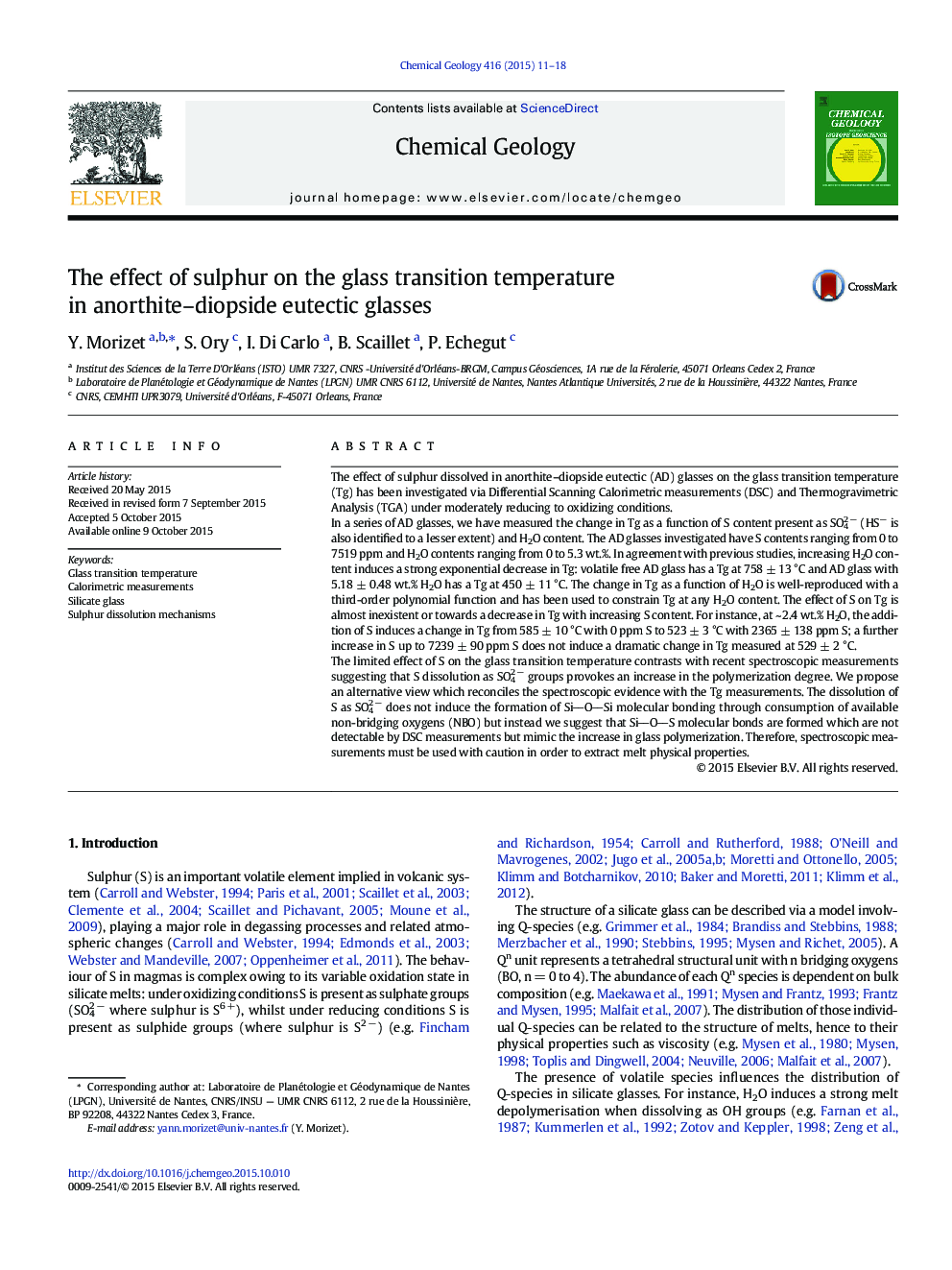| کد مقاله | کد نشریه | سال انتشار | مقاله انگلیسی | نسخه تمام متن |
|---|---|---|---|---|
| 4698437 | 1637558 | 2015 | 8 صفحه PDF | دانلود رایگان |
• Sulphate groups (SO42 −) do not affect glass transition temperature.
• Discrepant with spectroscopic observation
• Limited effect of S on melt viscosity
The effect of sulphur dissolved in anorthite–diopside eutectic (AD) glasses on the glass transition temperature (Tg) has been investigated via Differential Scanning Calorimetric measurements (DSC) and Thermogravimetric Analysis (TGA) under moderately reducing to oxidizing conditions.In a series of AD glasses, we have measured the change in Tg as a function of S content present as SO42 − (HS− is also identified to a lesser extent) and H2O content. The AD glasses investigated have S contents ranging from 0 to 7519 ppm and H2O contents ranging from 0 to 5.3 wt.%. In agreement with previous studies, increasing H2O content induces a strong exponential decrease in Tg: volatile free AD glass has a Tg at 758 ± 13 °C and AD glass with 5.18 ± 0.48 wt.% H2O has a Tg at 450 ± 11 °C. The change in Tg as a function of H2O is well-reproduced with a third-order polynomial function and has been used to constrain Tg at any H2O content. The effect of S on Tg is almost inexistent or towards a decrease in Tg with increasing S content. For instance, at ~ 2.4 wt.% H2O, the addition of S induces a change in Tg from 585 ± 10 °C with 0 ppm S to 523 ± 3 °C with 2365 ± 138 ppm S; a further increase in S up to 7239 ± 90 ppm S does not induce a dramatic change in Tg measured at 529 ± 2 °C.The limited effect of S on the glass transition temperature contrasts with recent spectroscopic measurements suggesting that S dissolution as SO42 − groups provokes an increase in the polymerization degree. We propose an alternative view which reconciles the spectroscopic evidence with the Tg measurements. The dissolution of S as SO42 − does not induce the formation of SiOSi molecular bonding through consumption of available non-bridging oxygens (NBO) but instead we suggest that SiOS molecular bonds are formed which are not detectable by DSC measurements but mimic the increase in glass polymerization. Therefore, spectroscopic measurements must be used with caution in order to extract melt physical properties.
Journal: Chemical Geology - Volume 416, 27 November 2015, Pages 11–18
